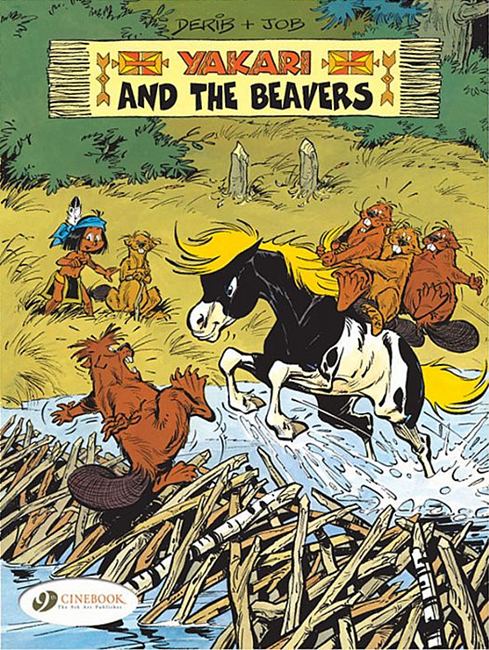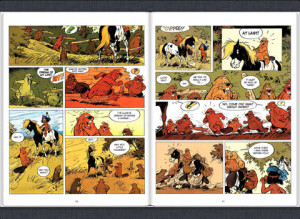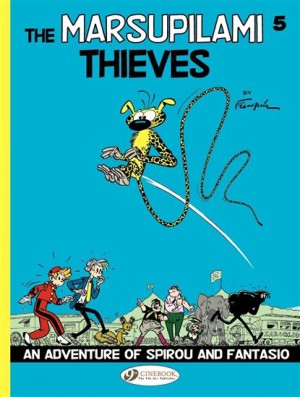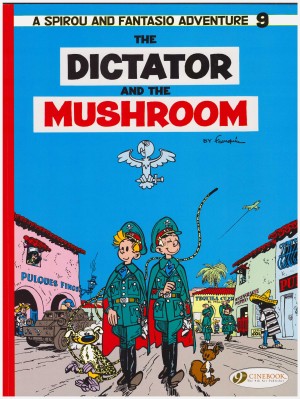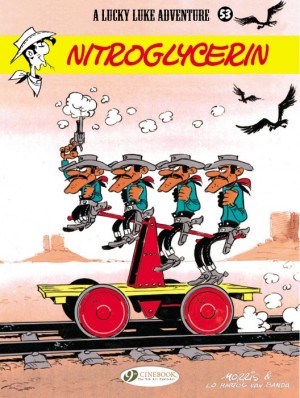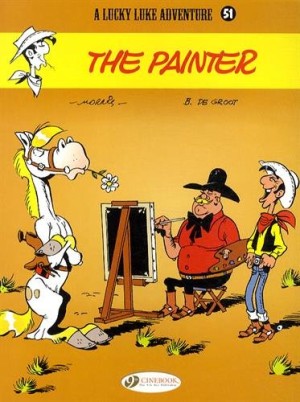Review by Jamie McNeil
Yakari, his friends Rainbow, Buffalo Seed and a few other children are playing games on a glorious summer day when Little Thunder, the horse to which Yakari can talk, suggests they go down to the river to cool off. Swimming in the river and following its path, the pair happen upon a strange wall made of mud and lumber. When they try to cross it they meet the Beaver tribe, the builders of the wall who have just moved in to the area. What ensues is adventure and friendship between Yakari and the beavers: the wise Wooden Dam, the belligerent foreman Thousand Mouths, the artistic genius Double Tooth, and the boisterous Linden Tree, among others.
Yakari and the Beavers evokes memories of long sunny summers, of green grass, winding rivers, lush woods, and endless days exploring – if you were fortunate enough to visit or live near a similar area. Job’s plot is straightforward but it winds back and forth, introducing elements of danger or discovery that make a fairly short story (roughly forty pages) a full story. The language is slightly stilted, partly due to translation and partly to create the impression that Yakari is still learning how to speak to animals. Job emulates the poetic speech patterns of the Sioux, which sounds flowery in English and strange in a modern context, but which are also oddly pleasing. Derib’s art carries a sense of grandeur and majesty, the trees and rivers well illustrated, the artist employing light and warm colours to accentuate the season. There are bundles of energetic detail in Derib’s illustrations, impressive considering the number of characters occupying one the varying sized frames. The beavers all have little personalised characteristics to differentiate them from one another, a wonderfully styled sound of KLAKKLAK and KRRR ringing from the pages as they work on. It’s a style so different from more modern ones, yet so utterly charming!
Yakari has the kind of adventures boys dream of. He talks to the animals, among his friends a pony and an eagle, stands up for justice and facing danger bravely despite his size. Throughout the narrative are lessons like friendliness, respect, learning from different cultures and using ingenuity to solve problems. Derib and Job don’t particularly flinch from highlighting real life perils in Yakari’s adventures, but there is an eternal optimism that sparkles throughout and even when the plot is tense a lovely sense of happy freedom abounds. Job’s dialogue is easy enough to make this a lovely book to encourage little tykes’ reading.
In Cinebook chronology Yakari’s and Little Thunder’s next adventure is helping the beavers out of some trouble in Yakari and the Grizzly, and for pedants insisting on the original publication order then Yakari and Nanabhozo is for you.
